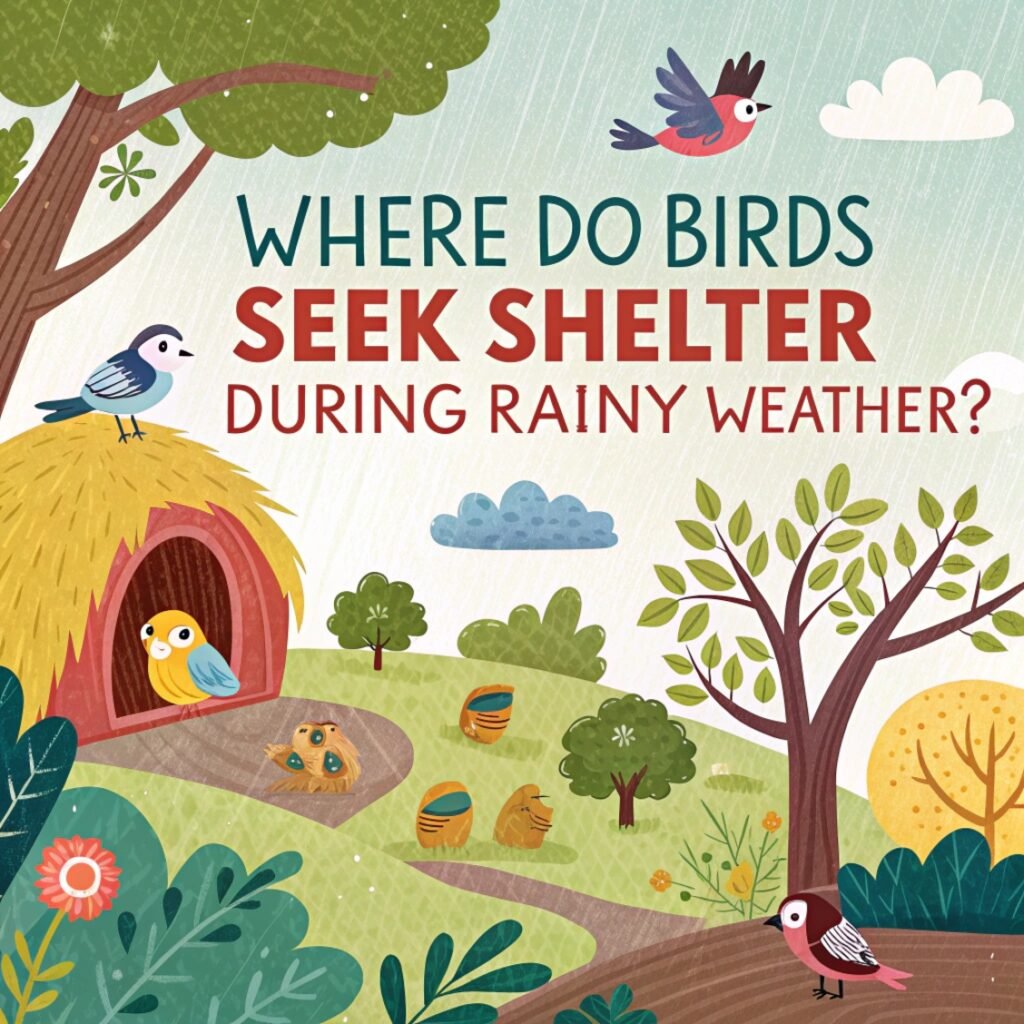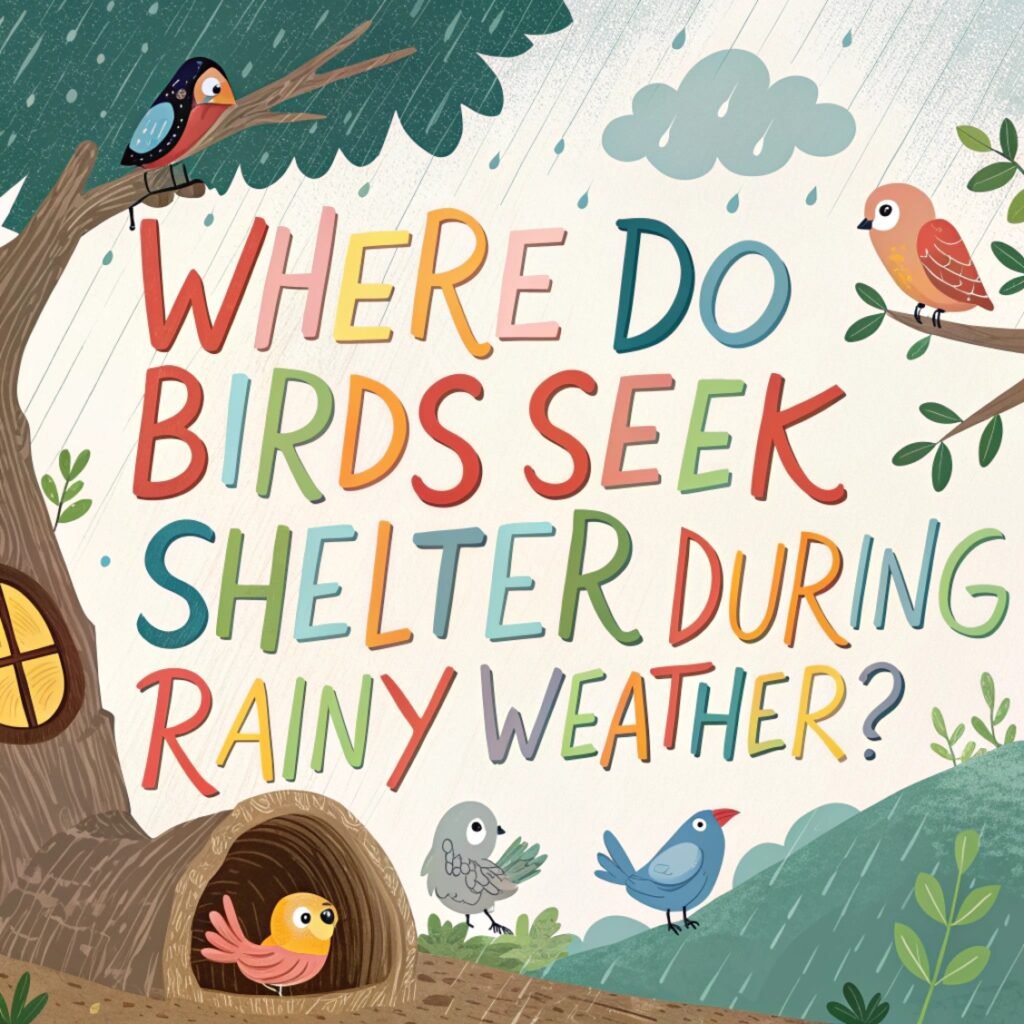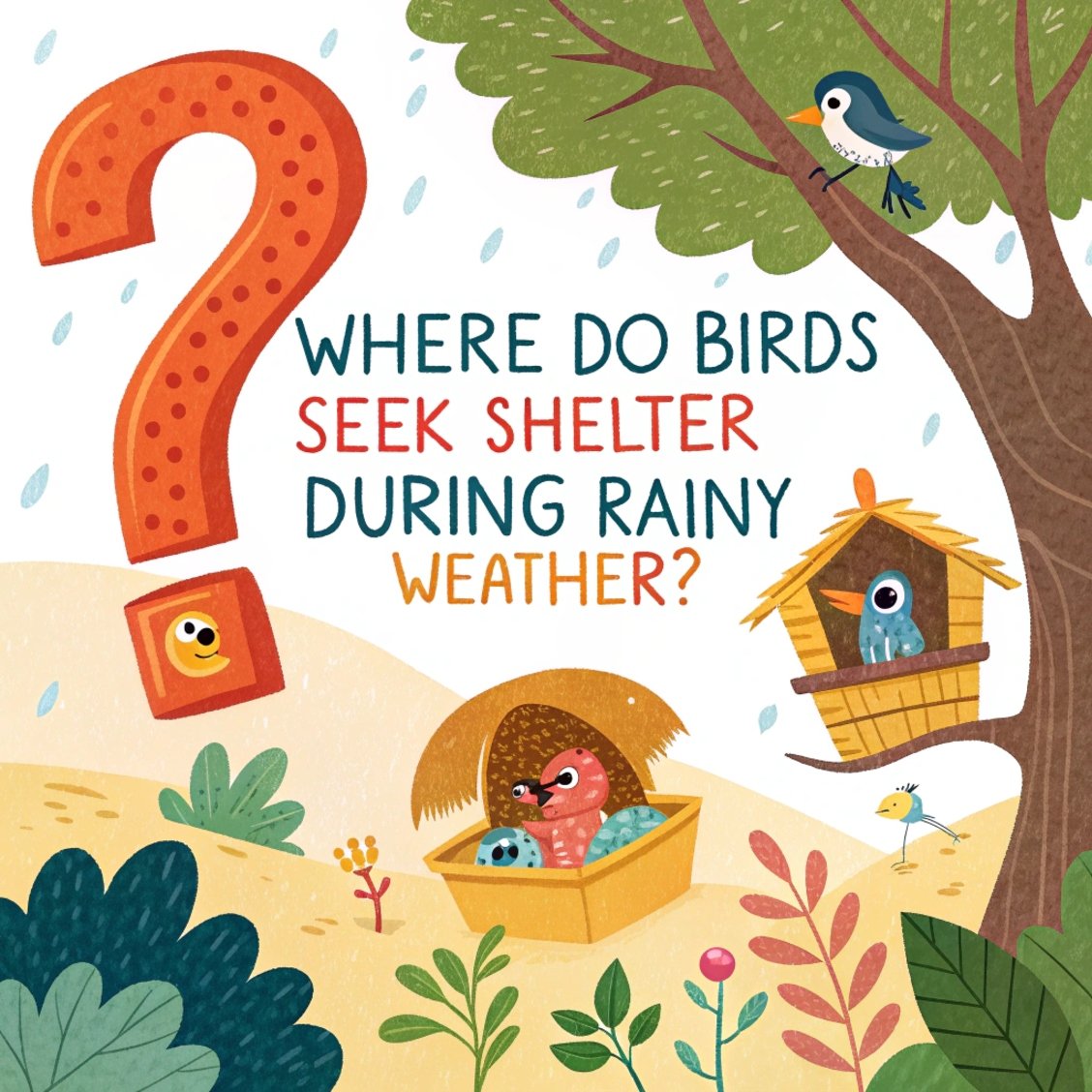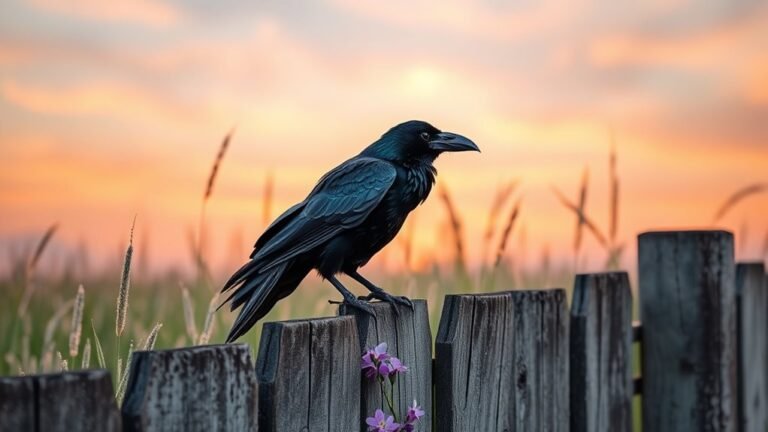Where Do Birds Seek Shelter During Rainy Weather? – Amazing Avian Escape
Birds are remarkable creatures that have adapted to various environmental challenges, including rainy weather.
While we often wonder about their whereabouts during downpours, the answer isn’t as straightforward as one might think.
Birds employ diverse strategies to cope with rain, depending on factors such as species, rain intensity, and available shelter options.

Key Takeaways:
Here’s a quick overview of how birds handle rainy weather:
- Shelter seeking: Many birds find refuge in dense vegetation, tree cavities, or man-made structures.
- Species-specific responses: Larger birds may endure rain, while smaller species tend to seek shelter more readily.
- Waterproof feathers: Birds have oil-producing glands that help make their feathers water-resistant.
- Rain-bathing: Some birds, like Turkey Vultures, may spread their wings to enjoy a natural shower.
- Foraging challenges: Prolonged rain can impact birds’ ability to find food, forcing them to venture out despite the weather.
- Posture adaptation: Birds often adopt a specific rain-resistant posture to minimize water absorption and heat loss.
- Nesting considerations: Most nests are designed to drain water and provide some protection from rain.
- Aquatic birds: Ducks, geese, and other water birds generally continue their normal activities during rainfall.
- Urban adaptations: Birds in cities may use buildings and other structures for shelter.
- Temperature regulation: Birds must maintain their body temperature during rainy and cold conditions to survive.
The Importance of Shelter for Birds During Rainfall
When rain begins to fall, many birds instinctively seek shelter to protect themselves from the elements.
This behavior is crucial for their survival and well-being. Shelter serves multiple purposes for birds during rainy weather.
Firstly, it helps them stay dry, which is essential for maintaining their body temperature and preventing hypothermia. Wet feathers can significantly impair a bird’s ability to fly and regulate its body heat.
Secondly, shelter provides protection from strong winds and potential predators that might take advantage of their vulnerability during adverse weather conditions.
Lastly, finding a suitable shelter allows birds to conserve energy that would otherwise be expended in fighting against the rain and wind.
Common Shelter Options for Birds in Rainy Weather

Birds have a variety of options when it comes to finding shelter during rainy weather. One of the most common choices is dense vegetation, such as bushes, shrubs, and trees with thick foliage.
These natural shelters offer good protection from rain and wind while allowing birds to remain hidden from potential threats.
Tree cavities and hollow logs are also popular shelter spots, especially for cavity-nesting species. These enclosed spaces provide excellent protection from the elements and can be quite cozy for birds waiting out a storm.
In urban and suburban areas, birds often take advantage of man-made structures like porches, eaves, bridges, and even birdhouses designed specifically for shelter.
How Different Bird Species React to Rain
The response to rain varies significantly among bird species. Larger birds, such as gulls, hawks, and herons, often have the ability to withstand rain for longer periods and may simply sit still in open areas, waiting for the shower to pass.
Their larger size and more robust feathers provide better insulation and protection from the elements.
On the other hand, smaller songbirds are more vulnerable to the effects of rain and cold. These species typically seek shelter more quickly and may huddle together in dense vegetation or other protected spots to conserve heat and stay dry.
Some ground-dwelling birds, like quails and pheasants, might take cover under low-lying bushes or in tall grass.
The Role of Feathers in Protecting Birds from Rain

Birds’ feathers play a crucial role in their ability to cope with rainy conditions. Most birds have a special oil-producing gland called the uropygial gland or preen gland, located near the base of their tail.
This gland secretes an oily substance that birds spread over their feathers during preening.
The oil helps to make the feathers water-resistant, allowing raindrops to bead up and roll off rather than soaking through.
This natural waterproofing is particularly well-developed in aquatic birds like ducks and geese, enabling them to spend extended periods in water without getting waterlogged.
However, even with this protection, prolonged exposure to heavy rain can eventually penetrate the feathers, which is why most birds still seek shelter during downpours.
Behavioral Adaptations of Birds During Rainfall
Birds have developed various behavioral adaptations to cope with rainy weather. One common behavior is the adoption of a specific rain posture.
In this position, birds typically withdraw their heads, point their bills towards the rain, and keep their bodies upright with feathers sleeked down.
This posture helps minimize exposure to rain and allows water to slide off their feathers more easily.
Some species, like Turkey Vultures, have been observed engaging in rain-bathing behavior, where they spread their wings and allow the rain to wash over them. This behavior may help clean their feathers and could potentially be enjoyable for the birds.
However, this is more common in larger species that can better withstand the cooling effects of the rain.
The Impact of Rain on Birds’ Foraging Habits
Rainy weather can significantly affect birds’ ability to find food, which in turn influences their behavior during wet periods. For many insectivorous birds, rain can make it difficult to spot and catch flying insects.
However, some species may take advantage of the situation, as earthworms and other soil-dwelling creatures often come to the surface during light rain.
Prolonged rainy periods can pose a serious challenge for birds, especially smaller species with high metabolic rates.
These birds may be forced to venture out in search of food even during heavy rain, as they cannot afford to go without eating for extended periods.
This necessity to forage despite the weather highlights the delicate balance birds must maintain between staying dry and meeting their nutritional needs.
Aquatic Birds and Their Relationship with Rain
For aquatic birds like ducks, geese, and gulls, rain often has minimal impact on their daily activities. These species are well-adapted to wet conditions and may continue foraging and swimming as usual during rainfall.
Their feathers are typically more water-resistant than those of land birds, allowing them to repel water effectively.
In fact, rainy weather can sometimes create new opportunities for aquatic birds. Flooded fields and expanded water bodies can provide additional foraging areas, potentially increasing access to food sources like insects, small fish, and aquatic plants.
Some shorebirds may even take advantage of rain-soaked grounds to probe for worms and other invertebrates that become more accessible in wet soil.
Urban Birds and Their Shelter Strategies
Birds living in urban and suburban environments have adapted to use various man-made structures for shelter during rainy weather.
Buildings offer numerous options, such as eaves, awnings, porches, and windowsills, which can provide excellent protection from rain.
Birds may also seek refuge under bridges, in parking garages, or even in open sheds and barns in more rural areas.
Some urban-dwelling birds have become quite adept at exploiting these artificial shelters. Pigeons, for example, are often seen huddling on building ledges or under overhangs during rainy periods.
House Sparrows and Starlings may use gaps in building facades or roof spaces as temporary shelters.
These adaptations demonstrate the remarkable ability of birds to thrive in human-altered environments, even during challenging weather conditions.
The Challenges of Nesting During Rainy Seasons
Rainy weather can pose significant challenges for nesting birds, but most species have evolved strategies to cope with wet conditions. Many birds construct nests with built-in drainage to prevent water accumulation.
The materials used in nest construction, such as grasses and small twigs, often allow water to pass through while still providing insulation.
Parent birds play a crucial role in protecting their nests during rain. They may sit on the nest to shield eggs or young chicks from raindrops and to provide warmth.
Some species, like swallows, build nests with overhanging “roofs” that offer additional protection from the elements.
While moderate rain usually doesn’t pose a severe threat to nests, prolonged heavy rainfall or flooding can be dangerous, potentially leading to nest failure or the loss of eggs or chicks.
Temperature Regulation in Birds During Wet Weather
Maintaining proper body temperature is crucial for birds, especially during wet and cold weather. When feathers get wet, they lose much of their insulating properties, making it harder for birds to stay warm.
This is why many birds seek shelter during rain – to avoid getting wet and chilled. Smaller birds are particularly vulnerable to heat loss due to their high surface area-to-volume ratio.
To combat heat loss, birds may fluff up their feathers to trap more air for insulation, tuck their bills into their feathers, or stand on one leg to reduce heat loss through their feet.
In extreme cases, some species may enter a state of torpor, lowering their body temperature and metabolic rate to conserve energy during prolonged periods of cold, wet weather.
The Benefits of Rain for Some Bird Species
While rain can be challenging for many birds, it can also bring benefits to certain species. Ground-feeding birds like robins and thrushes may find it easier to locate and capture earthworms that come to the surface during light rain.
Some birds may take advantage of rain to bathe and clean their feathers, which is important for maintaining feather condition and removing parasites.
Rain also plays a vital role in the broader ecosystem, supporting the growth of plants and insects that many birds rely on for food.
Seasonal rains in some regions can trigger breeding behaviors in certain bird species, as the increased moisture often leads to greater food availability for raising chicks.
Thus, while individual rainstorms may temporarily disrupt birds’ activities, the overall effects of rain are often positive for avian populations.
Long-term Effects of Prolonged Rainy Periods on Bird Populations
Extended periods of heavy rainfall can have significant impacts on bird populations. Prolonged wet weather during the breeding season can lead to reduced nesting success, as eggs and chicks are more vulnerable to chilling and drowning.
Heavy rain can also decrease food availability for many species, particularly those that rely on flying insects.
However, birds are generally resilient and have evolved to cope with varying weather patterns. Most healthy adult birds can survive short-term food shortages caused by rain.
The long-term effects of changing rainfall patterns due to climate change are of greater concern, as they may alter habitat suitability and food availability on a broader scale, potentially leading to shifts in bird populations and distributions over time.
FAQs
How do small birds stay warm during rainy weather?
Small birds stay warm during rainy weather by seeking shelter in dense vegetation or cavities, fluffing up their feathers to trap air for insulation, and sometimes huddling together to share body heat.
They may also enter a state of torpor to conserve energy in extreme conditions.
Can birds fly in the rain?
Yes, birds can fly in the rain, but many prefer not to unless necessary. Rain makes flying more challenging and energy-intensive. Wet feathers can also impair a bird’s ability to fly efficiently.
However, if food is scarce or the rain is prolonged, birds will fly to find food or better shelter.
Do birds sing in the rain?
While birds generally sing less during heavy rain, some species may continue to vocalize during light rain or immediately after a rainstorm.
The reduced singing during rain is likely due to the need to conserve energy and the difficulty in projecting their songs through the noise of rainfall.
How do aquatic birds like ducks handle rainy weather?
Aquatic birds like ducks are well-adapted to wet conditions. Their feathers are naturally more water-resistant, and they have a well-developed oil gland that helps waterproof their plumage.
These adaptations allow them to continue their normal activities, such as swimming and foraging, even during rainy weather.
What should I do if I find a wet bird during a rainstorm?
In most cases, it’s best to leave wet birds alone. Healthy adult birds can usually cope with rain and will seek appropriate shelter on their own.
If you find a visibly injured or very young bird that appears to be in distress, it’s best to contact a local wildlife rehabilitator for advice on how to proceed.

Hello, I’m Emily Price, the founder of Birds Affection. As a passionate bird enthusiast and spiritual seeker, I’ve always been fascinated by the symbolic meanings and mystical connections between birds and our lives. On this website, I share my knowledge and insights on the spiritual significance of various bird species, exploring their roles as messengers, guides, and teachers. Through my writing, I aim to inspire and educate others on the profound wisdom and beauty that birds bring to our world. Join me on this journey as we delve into the enchanting realm of bird symbolism and discover the hidden meanings behind these magnificent creatures.







